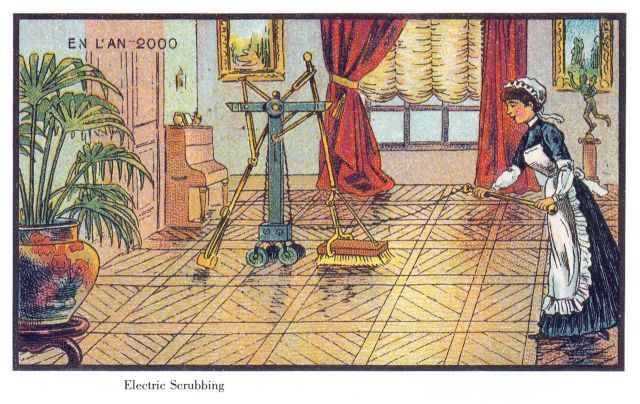
Look at this picture. It is a futuristic picture made in1899 by Jean-Marc Côtè. Its title is “En l’an 2000 Remote Controlled Electric Floor Scrubber” and is a very interesting demonstration of how long time people imagine and wish that machines work by themselves to help men and women doing their daily fatigues. The picture has been included in the report “Smart home and appliances: State of the art”, a Technical report by the Joint Research Centre (JRC), the European Commission’s science and knowledge service.
This study explains how from the beginning of the 20th century a vision of a Smart Home has populated the imagination of the people. From flying electric cars, to automatic vacuum cleaners, popular culture has imagined ways in which people’s life’s’ would become more easy and controlled via automatic.
In 1965, Gordon Moore produced a paper that contained what would be commonly known as Moore’s law. In this paper, Moore predicted the use of integrated circuits in “personal portable communications equipment”, automated controls for automobiles, and devices with little human interaction. home computers. But the what has led to Moore’s law was the prediction of that the density of integrated circuits on a single chip would double every year for the next decade, which has become accurate, allowing for the personal computer industry to thrive. This has allowed for smaller, faster and cheaper computers that somehow have changed society from the last part of the 20th century onwards. Moore predicted that the innovation changes necessary to base this prediction would be thanks to the fulfilment of a three-way condition – design cleverness, increasing chip size and decreasing feature size.



